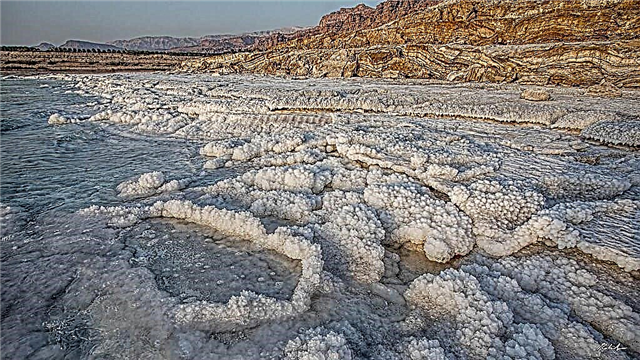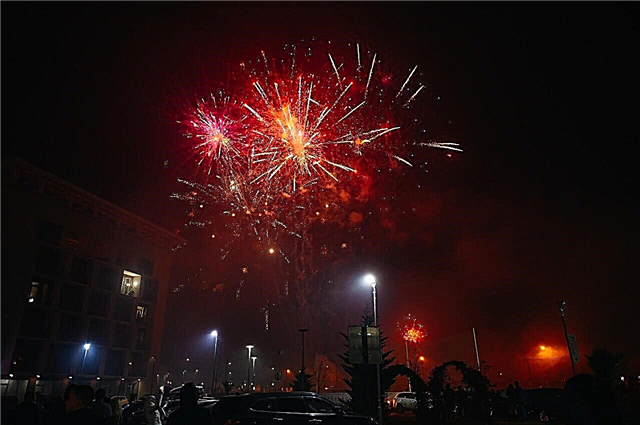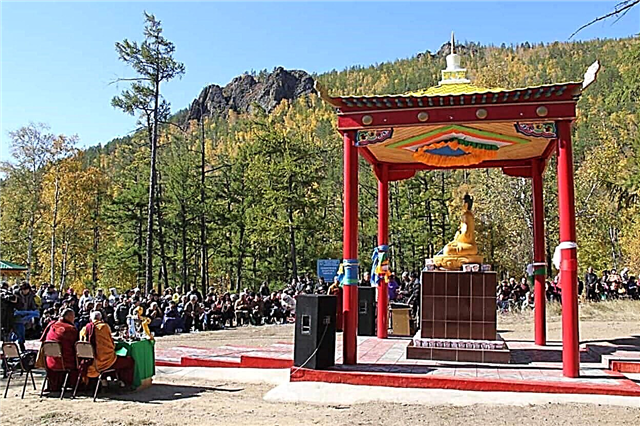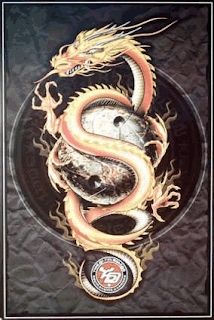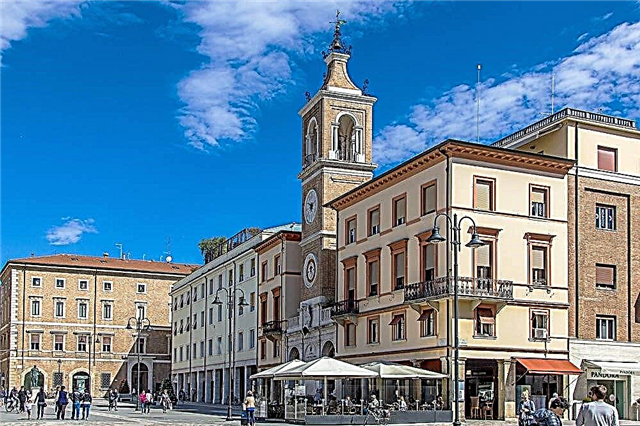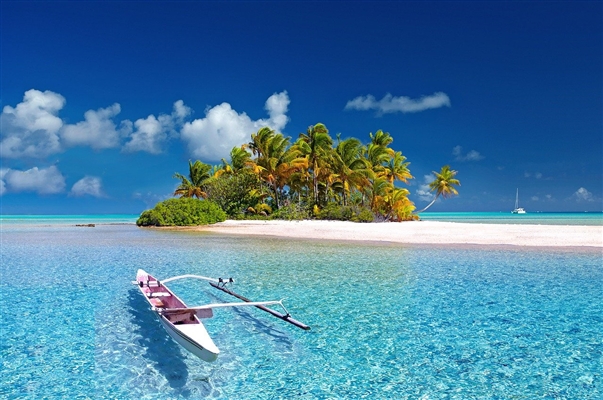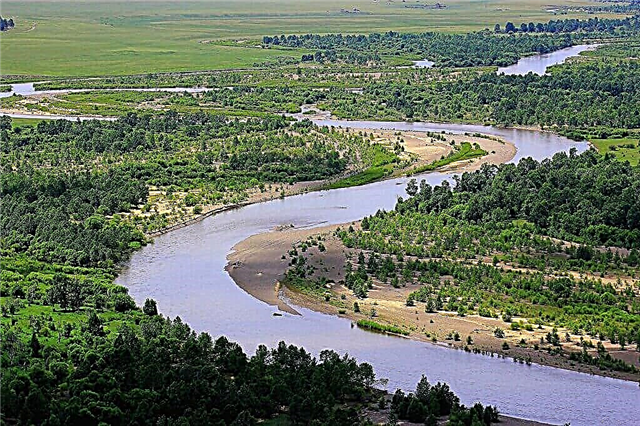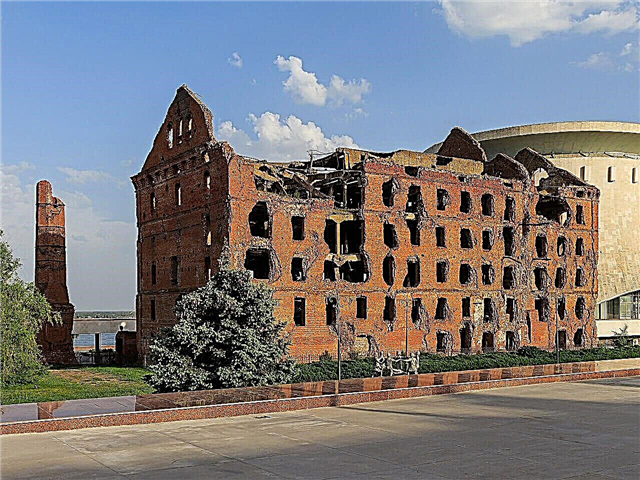The most important historical milestone in the life of the city is the Battle of Stalingrad during the Great Patriotic War. Most of the city's main attractions are dedicated to these tragic military events. The first memorable place where tourists rush is Mamayev Kurgan. This grandiose memorial complex will not leave anyone indifferent. The grandeur of its memorable ensemble amazes all visitors.
The Memory Museum is dedicated to military events. The city has preserved the ruins of buildings that survived a long siege and resisted the pressure of the enemy - the Ruins of Gergardt's Mill, Pavlov's House, Volgograd elevator. The heroes of the military events were both people - Mikhail Panikakha, to whom a monument was erected, and equipment - the extinguisher boat, which saved people from fires, and is now part of the memorial complex.
The most interesting and beautiful places
List, photos with names and descriptions of the best sights of the city. He will help you plan routes to explore the top places of the city in 2-3 days.
Monument-ensemble "Heroes of the Battle of Stalingrad"
Located on the Mamayev Kurgan, where fierce battles were fought during the Battle of Stalingrad. Opened in 1967. The ensemble of the memorial complex stretches for more than 800 meters in length and has a unique architectural solution - each object of the ensemble opens as you ascend to the mound. The composition includes several significant compositions - the Square of Sorrow, the high relief "Memory of Generations". The ensemble is crowned with a sculpture of the Motherland-Mother.

Read about all the top places in the region: the main attractions of the Volgograd region.
Museum-panorama "Battle of Stalingrad"
The building of the museum has an unusual shape especially for showing a circular panorama. On a canvas measuring 16 * 120 meters, the military operation "Ring" of the Battle of Stalingrad is shown. The faces of the fighters who became famous for their exploits during the battle are depicted. The museum's exhibitions are located on the ground floor. An exhibition of military equipment is located in the open air, monuments to Zhukov and the civilians of Stalingrad are erected.

Embankment of the 62nd Army
The street was named after the unit that liberated Stalingrad. This is a city promenade stretching between the River Port and the Volgograd Bridge. There are several dozen sights on the central embankment; many excursion routes start from here. The fountain "Art" adorns the embankment, from which green avenues radiate out like rays. City holidays are held in this place.
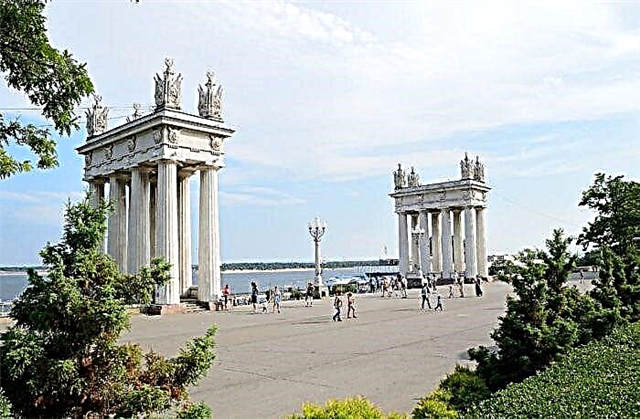
Square of the Fallen Fighters
The central square of the city dedicated to the events of the Battle of Stalingrad and the Civil War. Its architectural ensemble is a federal town planning monument. The mass graves of the fallen soldiers are framed by a square with a wide alley and a flower garden. A memorial obelisk 26 meters high rises above the mass grave. In front of the obelisk, the Eternal Flame with a guard of honor has been burning since 1963.

Ruins of Gerhardt's mill
Built in 1908. The five-storey building was built of bricks with a reinforced concrete frame. In the battles for the city during the Great Patriotic War, the strong building was used as the headquarters of the army of General Romantsev. It withstood 58 days of the siege. The walls of the mill are dotted with holes from bullets and bomb fragments. The windows and roof were partially destroyed by the explosions. The ruins were left as a reminder to descendants of the war times.

Pavlov's House
A four-storey residential building considered elite in the pre-war period. In the battles of Stalingrad, this building withstood almost 2 months of the siege, this line was never taken by German troops. After the end of the war, the almost completely destroyed house was restored, preserving for history from the facade of the new house the original brick wall with traces of bullets and shells. A memorial plaque is installed at the end of the wall.

Volgograd high-speed tram
An original transport network for Russia, which is called "underground tram" or "metrotram". About 50 million passengers use it annually. The underground track for the tram was laid for 8 years, the opening took place in 1984. The popular Forbes magazine included the Volgograd metro-tram hybrid in the list of the most interesting routes on the planet. The system has 22 stations, the length of all tracks is 17 km.

Lenin Avenue
It passes through three districts of the city, but tourists are more interested in the boulevard part of the avenue - from Lenin Square to the monument to the founders of the city. It is a long green alley, about 2 km long, which divides the avenue into two parts. It is decorated with flowering flower beds, and three fountains have been erected. Many monuments have been erected - to the defenders of Stalingrad, twice Hero of the USSR, pilot Yefremov, and the poetess Agashina.

Museum-reserve "Old Sarepta"
A large ethnographic and archaeological center with an area of 7.1 hectares in the Krasnoarmeisky district. It includes 27 buildings of the architectural ensemble of the Moravian brothers of the 18th-19th centuries - residential buildings, houses of a pastor and a pharmacist, a trading store, a stable, a warehouse, a distillery, and a church. The buildings of the mustard plant have been preserved, and the mustard museum is open. The Lutheran Church has an organ with live music without electronic elements.

Volga-Don Canal
They wanted to build a canal connecting two great rivers since the 16th century. The project of a grandiose hydraulic engineering construction was approved in the 1930s, but due to the Great Patriotic War, its implementation began only in 1948. In 1952, the first ships passed through the canal. Tourists often come to appreciate the interesting sight along the passage of ships through the lock, decorated with a 45-meter Arc de Triomphe.

Monument to Lenin at the entrance to the Volga-Don Canal
It is one of the tallest statues in the world. The height of the bronze Lenin is 27 meters, and the total height of the composition with the pedestal is 57 meters. The monument was opened in 1973 on the site of a 24-meter monument to Stalin, dismantled during the de-Stalinization. The authors of the monument to Lenin were the same architect and sculptor who had previously completed the project of the monument to Stalin - Vuchetich and Polyakov.

Volzhskaya HPP
Located 20 km from the center of Volgograd, not far from the city of Volzhsky. The hydroelectric power station was commissioned in 1958. At that time, it was the largest in Europe. It includes three earthen dams, shipping locks, dams. Around the hydroelectric station there are observation platforms from which one can appreciate the entire power and monumentality of the hydroelectric station. You can get inside the hydroelectric power station as part of an organized excursion group.

Attractions on Mamayev Kurgan
The huge memorial complex can be divided into separate zones. Below we have named the main ones, you will see them as you climb to the top of the mound.
Square of those who stood to death
A large area covered with granite, which is framed by birches and spruces. In its center there is a round reservoir with a diameter of 30 meters, in the center of which there is a sculpture of a warrior-defender. The figure has a view of the entire city that he defends. He stands indestructible in the path of the enemy, symbolically covering the monument to the Motherland. On Victory Day, the square is usually strewn with flowers from visitors to the memorial complex.

Ruined walls
High relief conveying the pain and tragedy of the people defending their native land. The walls are located on the sides of the stairs leading to the sculpture of the Motherland. The high stone walls depict scenes of the Battle of Stalingrad and fierce street battles. The faces of the soldiers stopping the enemy pass through, the phrases that have become the slogans of the war times are stamped out. The sounds of bombs and military bursts can be heard from the loudspeakers.

Heroes Square
The largest square of Mamaev Kurgan.In its center there is a large pool, whose water surface symbolizes the waters of the Volga. The amphitheater degrees adjoin the pool on three sides. On the left side of the pool there is a hundred-meter-high banner wall, on the other side there are monumental sculptural compositions dedicated to the heroism and self-sacrifice of soldiers. The height of all figures in the compositions is 6 meters.

Sorrow Square
Adjacent to the mass grave. On its left side there is a sculpture depicting a grieving woman bending over the body of a person close to her. At the monument's pedestal there is a small pool called the Lake of Sorrow. You can walk along it through the laid granite slabs to lay flowers at the monument. The graves of the Unknown Soldier and Commander Chuikov are located on the square.

Hall of Military Glory at Mamayev Kurgan
The building is cylindrical in shape with a diameter of 42 meters. It has no doors or windows - visitors pass through holes in the wall. In the center of the oval hall is a large marble hand holding a burning torch. The names of 7,500 defenders of Stalingrad are carved on the walls. A sculpture of the Motherland is visible through a circular opening in the ceiling. Music plays around the clock in the hall - a melody from the work "Dreams" by Schumann.

Sculpture "The Motherland Calls!"
Center of the memorial ensemble of Mamaev Kurgan. The height of the sculpture is 87 meters. The sword in the woman's hand is 33 meters long. The unique sculpture is made of reinforced concrete; Nikitin, who built the Ostankino TV tower, took part in the engineering work. The sculptor Vuchetich expressively depicted a woman striving forward, raising her sons into battle. In the dark, the sculpture is illuminated by illumination beams.

The best museums in Volgograd
The most interesting museums in the city, which are definitely worth a visit.
Volgograd Museum of Local Lore
Has been working since 1914. During the Battle of Stalingrad, the museum's collections were almost completely destroyed. In the post-war period, the museum staff was actively engaged in replenishing the fund and now they store about 150 00 exhibits. Museum exhibitions tell about the history of the region, its nature, cultural customs and traditions of the peoples. Archaeological finds are on display. The museum is visited by 140,000 people annually.

Mashkov Museum of Fine Arts
The museum exhibits works by Russian and foreign masters of graphics, painting, arts and crafts, and sculpture. The most extensive is the collection of the artist Ilya Mashkov, a native of Volgograd. The attention of visitors is attracted by the canvases of famous painters - Aivazovsky, Roerich, Shishkin, Serov. The sculptural works of Mukhina, Tsereteli, Klodt are interesting. There are collections of icons, porcelain items of the 17th-20th centuries.
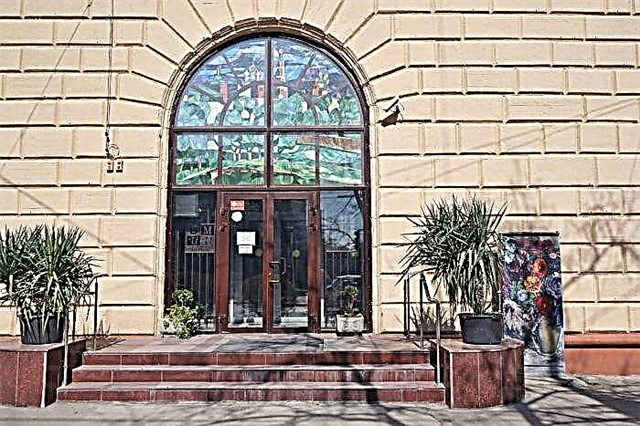
Memorial History Museum
Housed in a former 19th century merchant mansion. Several exhibition halls have an area of about 300 m². They exhibit about 1000 items that tell about the events of the Civil War, about the life of the city in 1917-1923. It contains photographs, military posters, paintings and graphics, weapons, household items, propaganda leaflets. An interesting exhibit is a model of an armored train, which you can climb inside.

Museum "Memory"
It is located near the Square of the Fallen Fighters in the building of the Central Department Store built in 1938. In 1943, within its walls, soldiers of the Red Army captured the commander-in-chief Paulus and the staff of the headquarters of one of the Wehrmacht armies. This event became the basis of the museum's expositions. Every year, a reconstruction of the battle is carried out here, during which the German Field Marshal was captured. The military environment is recreated in the halls.

Volgograd Planetarium
Opened in 1954. The entrance to the building, which looks like a temple, is decorated with massive columns and is crowned with the sculpture "Peace" by Vera Mukhina. The star hall has a domed screen. Thanks to 99 projectors, you can see about 6,000 stars, the movement of the sky, the setting and rising of the sun, the flight of comets. A telescope with an 800-fold magnification is installed in the 26-meter-high observatory tower, which makes it possible to observe the craters of the moon.

Architectural landmarks of Volgograd
The most visible and recognizable objects of civil and industrial architecture.
The building of the Tsaritsyn fire brigade
Built in the 19th century. The building style is eclectic. The high tower was built using unusual bonded masonry - the bricks are lined with the end facing out. The building, damaged during the Battle of Stalingrad, was rebuilt in the 1990s using the same technique. The original image of the coats of arms of Tsaritsyn and Saratov has been preserved. In the tower, at a height of 30 meters, there is an observation deck, from which an excellent view of the city opens.

Volgograd elevator
The mill complex, which included the elevator, was put into operation in 1941. During the hostilities, both opposing sides tried to occupy the tall building. The defenders of the building have repeatedly repelled the attacks of opponents, whose troops outnumbered them several times. In honor of this feat in 1977, a monument to the North Sea people who distinguished themselves in battles was erected near the elevator.

Railway station building
In 1862, the city's first railway station was built of wood. Since then, the building has been rearranged several times, and in 1954, after the destruction in wartime, a modern station building was built. The three-storey building is crowned with a tower with a spire. Its total height is 67 meters. On the sides of the staircase of the main entrance, there are 5-meter bas-reliefs depicting scenes of the Civil War and the Battle of Stalingrad.

River Station
One of the largest river terminals in Europe. It is 300 meters long and 50 meters high. The building can accommodate 700 people, and its port can accommodate 7 ships. It is interesting that in the building of the river station there is a concert hall of the city philharmonic society, a nightclub, cafes, shops, a gym. Passenger transportation works, you can also go on a boat trip on a comfortable motor ship.

Volgograd Arena Stadium
A football stadium built specifically for the 2018 World Cup matches. FC Rotor home stadium. The stadium has a capacity of 45,000 spectators. The walkways and driveways around the stadium are shaped like a star, symbolizing the city's heroic military past. The rest of the driveways, paved with paving slabs of different colors, create the image of the Order of Victory. City mass events are held at the stadium.

Churches and temples of Volgograd
Cult places of the city, the most famous Orthodox churches and cathedrals.
Alexander Nevsky Cathedral
Built in 1916 in honor of the rescue of the imperial family of Alexander III in a train accident. Blown up by the Bolsheviks in 1932. The restoration of the temple began in 2016 in the park near the Square of the Fallen Fighters. Old photographs are used to give it a historical look in the Russian-Byzantine style. The planned height is 56 meters. The construction should be completed by the celebration of the 800th anniversary of Nevsky.
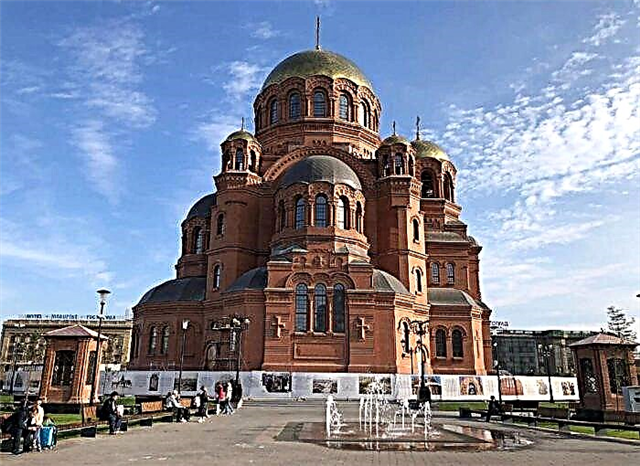
Kazan Cathedral
Founded in 1896. The elegantly decorated cathedral is located in the Voroshilovsky district. It is made in a pseudo-Russian eclectic style and resembles an ancient Russian carved tower. Red brick walls are decorated with white stucco moldings. The green pointed spiers are crowned with golden domes. The walls and vaults are painted with images of saints and biblical scenes. One of the most prized shrines of the cathedral is the icon with the relics of St. Alexander Nevsky.

Church of All Saints on Mamayev Kurgan
Built in 2015 at the mass grave of the fallen soldiers. The temple is made in a classical form - with white brick walls and golden domes. From a distance it seems that the graceful temple seems to be directed into the sky. Window frames are decorated with decorative elements. Round church chandeliers, forged in the forges specifically for the temple.Three icons of the temple are amazing - they are made in beaded technique and look voluminous.

Church of John the Baptist
Founded in 1589. At first it was wooden, then it was rebuilt in stone. It was visited by Peter I, and Catherine II gave the church parish status. The old church was destroyed by the Bolsheviks in 1932. The restoration of the church in Victory Park began at the end of the 20th century. Near the temple there is a monument to Saints Peter and Fevronia. The church hosts regular services and traditional religious practices.

Monuments and monuments of Volgograd
There are many famous monuments and memorials in the city. Below we have named just a few famous historical and modern sites.
Fountain "Art"
Located on the Central Embankment. Locals call it "the fountain of friendship" in memory of its original name. In the center of the bowl of the fountain, on a high pedestal, there are sculptures of three dancing girls in Russian folk costumes. A beautiful view of the Volga opens from the platform near the fountain. The fountain is open only during the summer. On weekends, a brass band plays, to the music of which everyone dances.

Monument to Mikhail Panikakha
It is located in the green zone at the intersection of Tarashchantsev Street and Metallurgov Avenue, at the place of the death of an infantry sailor. The monument symbolizes his feat and self-sacrifice - the defender of Stalingrad, engulfed in flames, was able to reach the enemy's tank and blow it up, breaking a bottle with a combustible mixture on the engine compartment. In this case, Mikhail himself died. The authors of the project are the sculptor Kharitonov and the architect Belousov.

Tram monument
Located in the City Children's Park. Installed in 2013, in the year of celebrating the 100th anniversary of the launch of rail transport in the city. The monument is a recreated carriage from the 1930s. Trams of this X series were in service in the city from 1926 to 1937. The car is installed on a platform with rails, information stands with the history of the development of tram traffic in Volgograd are located nearby.

Fire boat "Extinguisher"
Operated since 1903. Participated in the Civil War, drowned during the military operations of the Battle of Stalingrad. The boat transported food and weapons to the troops, he took part in the evacuation of civilians, extinguished fires that arose as a result of massive bombings. The boat was raised from the bottom in 1974, and in 1977 it was installed as part of the memorial complex in memory of the Volga river workers.

Monument to V.S.Kholzunov
Installed on the Central Embankment in 1940. This is one of the monuments that survived the hostilities of the Great Patriotic War. During the fighting, the pedestal was destroyed, but the fallen sculpture survived. The bronze sculpture of the Hero of the USSR is 3.85 meters high. The destroyed pedestal was replaced with a granite one, 4.5 meters high. The sculptor Belashov depicted the pilot at the moment of delivering a draft speech before the battle.

Monument to Alexander Nevsky
Opened in 2007. In honor of the opening of the monument to the commander, numbered among the saints, white doves were released into the sky and a festive prayer service was served. The sculptor Shcherbakov worked on the project of the monument. The Grand Duke holds a banner in his hands, he is dressed in military armor. The seven-meter-high bronze monument is located on the Square of the Fallen Fighters, where important city events take place - parades, holidays, concerts.

The main theaters of Volgograd
The best theater and concert venues to visit.
Volgograd Cossack Theater
Created in 1992. The main direction of creativity is the works of the Cossack theme. The theater puts on such performances as "Cossacks" based on Tolstoy's story, "Don Soul" and "Quiet Don" based on the works of Sholokhov. The repertoire includes many performances that tell about the heroic past of the city. The theater is located in a 19th century building. It was built of red brick and richly decorated with bas-reliefs and decorative elements.

Volgograd Musical Theater
The facade of the theater building faces the Volga embankment. The main entrance of the theater is decorated with paired columns, which gives it an identical look. The history of the theater began in 1931. On its stage you can see operettas and musical comedies, opera and ballet. The repertoire includes performances for children. The theater troupe has toured more than 200 cities in Russia and the CIS. Every season the theater delights the audience with new premieres.

New experimental theater
The theater building is admired for its elegance and luxury of decoration. The concept of performances in the theater is an innovative approach to reading the classics, staging modern plays. In 1988, the year of its opening, the theater's performances provoked heated discussions among spectators and critics, but the talent of directors and actors never left the audience indifferent. The basis of the repertoire is comedy performances, but there are also classic dramas.

Volgograd Puppet Theater
Until 1937 the theater had the status of an amateur theater. In 1956, he received his building, where it is currently located. The repertoire of the theater includes about 50 performances. 3-4 premiere performances are produced annually. The performances are based on Russian and foreign fairy tales, as well as children's dramatic works. The puppet theater has several diplomas of prestigious competitions, it is the organizer of international festivals.

Parks and squares of Volgograd
There are many small squares and alleys with green spaces in the city. Here you can relax, take a walk, sit on a bench and breathe in the fresh air.
The Heroes Alley
Laid from the Square of the Fallen Soldiers to the embankment. Around it there are houses in the Stalinist Empire style, many of them are interesting not only for their architecture, but also for their historical significance. On the roofs of two houses there are models of the Grand Order of Lenin and the Gold Star medal. The main element of the architectural ensemble of the alley is the stele, on which 127 names of the Heroes of the Soviet Union are engraved.

Victory Park
Located on the upper terrace of the waterfront. A wide front staircase leads to the river. The park is one of the favorite pedestrian areas for walking among residents and guests of the city. During the Second World War, battles were fought in this place, it was here that German troops were stopped. In the dark, the trees on the central alley are illuminated with illumination. On weekends and holidays, spotlights paint beautiful patterns in the alleys.

Central Park of Culture and Rest
The territory of the park is 29 hectares. It is a large green area in the city center with about 5,000 trees of 50 different species. It has amusement areas with attractions. An excellent view of Mamayev Kurgan, the Volga and the city itself opens up from the 50-meter high Ferris wheel. A cable car town has been equipped, there are sports grounds, an area for roller skating and skateboarding, bicycle paths.

Park in the floodplain of the Tsaritsa River
A popular destination for relaxation and fun. There is a children's playground in the shape of a pirate ship, a beautiful "dry" fountain. On the territory of Razdolye, in winter, there are tubing trails and an ice rink. From the park you can appreciate the beauty of the illumination of the Astrakhan Bridge. Nearby there is an interactive museum "Russia - My History" with an area of 7000 m². The multimedia format for presenting information is interesting for both adults and children.

Park of the 70th anniversary of victory
The park was renovated ahead of the 2018 FIFA World Cup. The landscaped area has become a popular place for outdoor recreation. It has paths for pedestrians and cyclists, playgrounds. The Peace Fountain in the center of the park symbolizes peace throughout the planet. In the evening, it is beautifully illuminated by illumination. Monuments-compositions dedicated to the wartime have been installed.

Military historical sites near the city
In the vicinity of Volgograd there are also many places associated with military events from the past. There are three important historical memorials not far from the city.
Memorial complex "Soldier's Field"
Dedicated to the fallen soldiers of the 62nd Army.Fierce battles for Stalingrad were fought on this territory in 1942. For a long time after the battles, crumpled equipment and ammunition remained on the field, which could still explode. The memorial complex was opened in 1975. In its center there is an explosion crater, next to it there is a monument to the girl Mila. On the marble slab is the text of a letter that her father wrote to her from the front.

Memorial complex "Lysaya Gora"
The complex is designed to perpetuate the memory of fierce battles for a strategically important point. The earth on the mountain still contains hundreds of fragments of shells, bullets, there are trenches and trenches left. An obelisk with a height of 20 meters was installed, on which memorable words are carved. It is located next to a mass grave. The monument on it is made of marble chips. There is a 4-meter obelisk near the tombstone.

Memorial complex "Lyudnikov Island"
The memory complex in the village of Nizhnie Barrikady is named after the commander of the rifle division that defended the village during the Battle of Stalingrad. There was a large factory in the village, which the German troops tried to capture. About 1,000 dead soldiers are buried in the mass graves, and monuments have been erected above them. The ruins of the house of the former director of the plant, where the headquarters of the division command was located, have been preserved.


